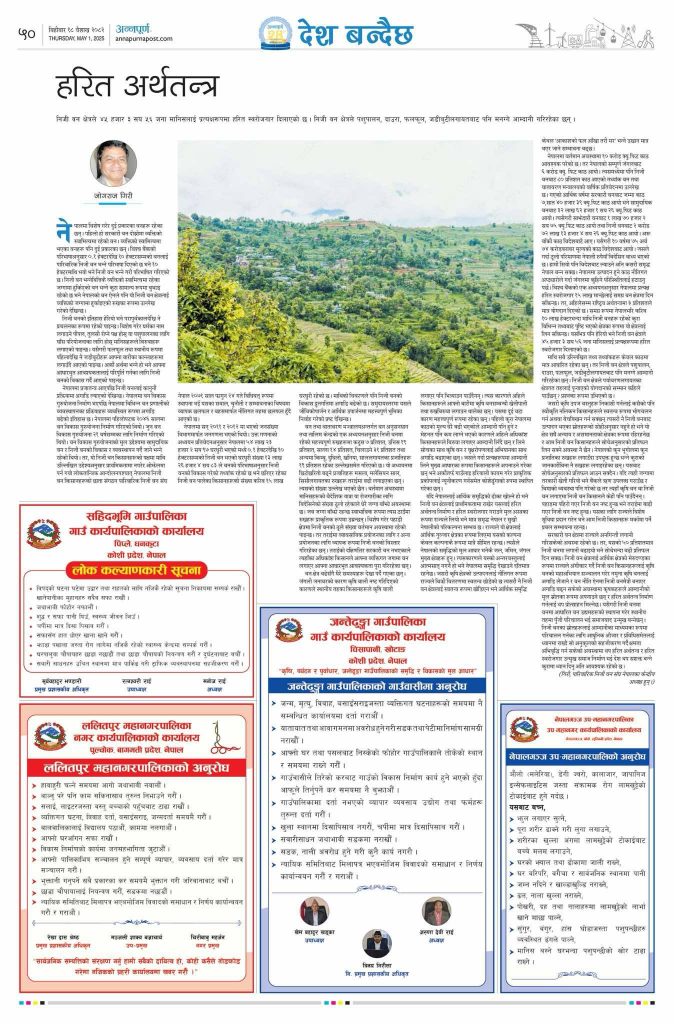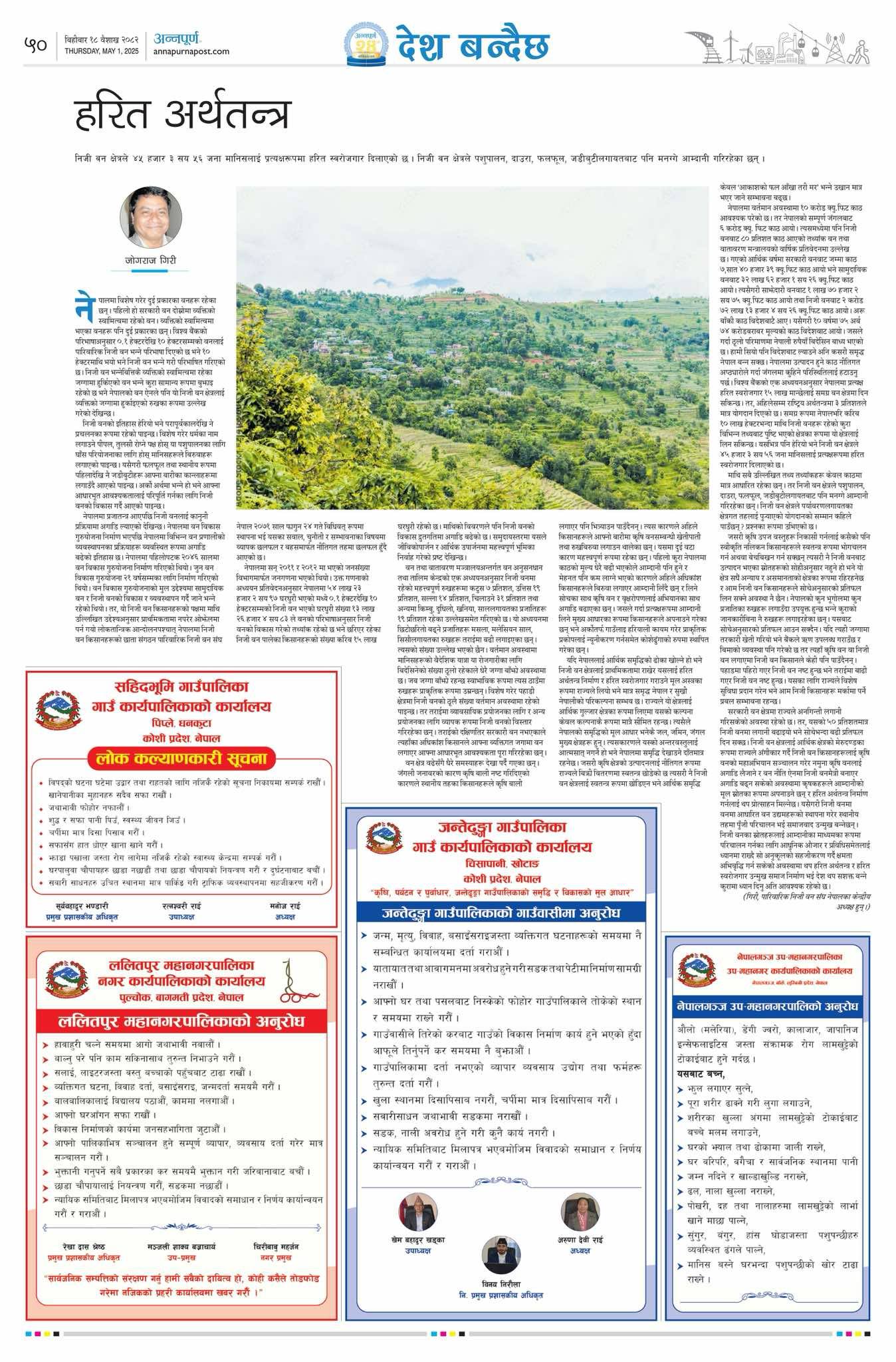Call Us
Mail Us
Address
Kharibot Road, New Baneshwor Ward No. 31, Kathmandu, Nepal
Private forests have existed since ancient times in Nepal for religious, medicinal, and household purposes. After the advent of democracy in Nepal, private forests started gaining policy and legal recognition. Master Plan for the Forestry Sector 1990 marked the beginning of a systematic approach to managing different forest systems including private forests. Despite policy intentions, private forests remained neglected and under-prioritized. After democratic movement, Association of Family Forest Owners Nepal (AFFON) as an umbrella organization of private forests was formally established on March 8, 2015. But legal and policy barriers continue to restrict farmers from freely using forest products, despite constitutional rights to property.
According to 2011-2012 population census, Nepal, among 5,423,297 HHs, 1,326,483 HHs have developed private forests (0.1–10 ha) and ~1.5 million HHs are said to maintain dispersed private forests. Though large number of HHs are managing private forests, the state has neither conducted a comprehensive study nor assessed impact of private forests on the green economy and green employment. Despite owning the land and paying land taxes, many private forest farmers are still compelled to face legal action just for using the forest resources they grow.
Currently, Nepal needs 10 million cubic feet of timber, but only 6 million cubic feet was harvested last fiscal year in which 2.72 million cu ft come from private forest, 740039cu ft from government forest, 3.26 million cu ft from community forest and 170275 million cu ft from collaborative forest. Remaining demand covered by imports, costing NPR 75.74 billion over 10 years. According to World Bank study, Nepal’s forest sector could provide direct green employment to 1.5 million people. Yet currently, it contributes only 3% to the national economy. Estimates suggest that more than 1 million ha of private forests exist across the country. Of this, around 45,356 individuals have obtained direct green employment, proving its vast potential. Most data and statistics mentioned above are focused on timber, but private forests also generate income from livestock, firewood, fruits, and medicinal herbs. Despite this, various policy and internal challenges are hindering the sector’s potential. Private forest farmers lack adequate strength and platforms to voice their concerns, and as a result, are unable to reap full benefits.
Despite their huge economic contribution, the private forest farmers are facing many challenges such as legal restrictions on using their own resources, lack of technical support, loans, insurance, and compensation for disasters, market access issues and middlemen exploitation. Policies support agriculture more than forestry, despite comparable potential for income. The state should recognize the private forest sector as a pillar of the economy. By launching a nationwide agroforestry campaign and making forest policies private-forest-friendly, farmers will adopt it as a major source of income, thereby promoting the green economy. Establishing forest-based enterprises at the local level and mobilizing local capital can foster a society moving toward socialism. With the right tools, technology, facilitation, compensation mechanisms, and capacity-building for private forest farmers, the country can develop a green economy and employment, leading to a stronger and more self-reliant Nepal.
https://www.annapurnapost.com/epaper/?date=2082-01-18&type=Annapurna+Post

